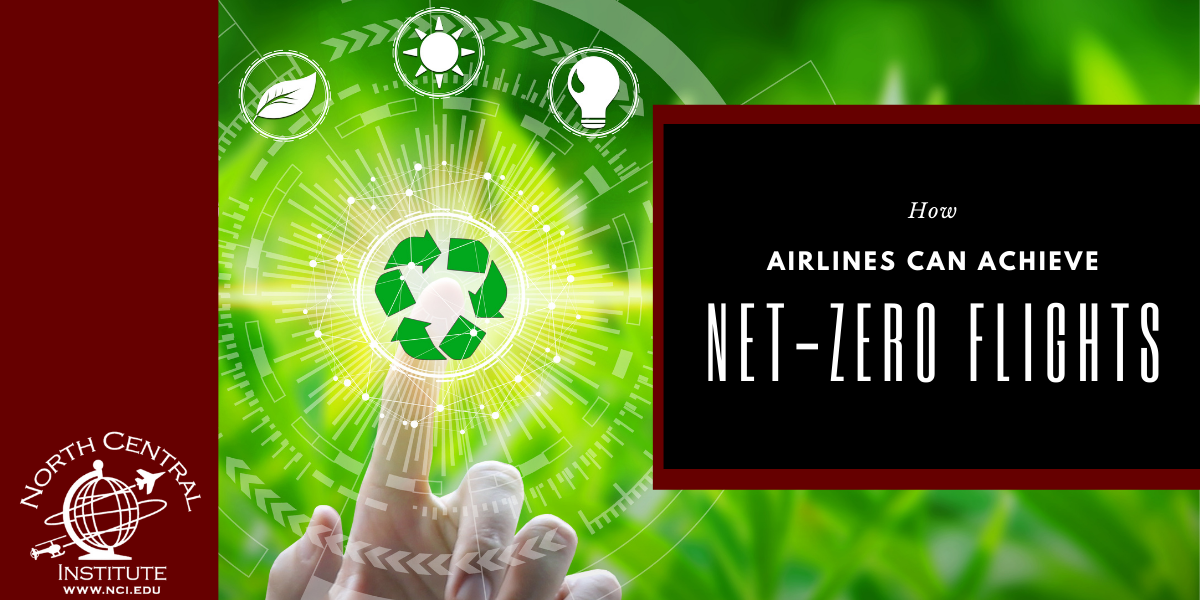From recycling to electric cars, everyone is trying to be more ecofriendly these days. But did you know that flying is responsible for almost 3% of the world’s emissions? There was a decrease in emissions at the height of the pandemic when people either weren’t flying or flights were being cancelled. However, as the aviation industry continues to recover from the impacts of Covid, emissions will be on the rise once more. Luckily, there are ways airlines can lessen their environmental impact.
What is Net-Zero?
Net-zero, when used in reference to emissions, is all about greenhouse gases. To achieve net-zero emission, the amount of greenhouse gases being produced must be equal to the amount of greenhouse gas emissions being taken out of the atmosphere. Think of a scale with weights on either side. There needs to be a balance.
One way to achieve net-zero, would be to not produce any emissions at all. Since that is nearly impossible currently, processes need to be in place to reduce the amount of greenhouse gases already in the atmosphere. You can continue to drive your cars and travel by plane; however, something needs to be done to balance out these actions. The planting of new forests or using renewable energy instead of fossil fuels, can be that balance.
What is SAF?
SAF, or sustainable aviation fuel, is one way airlines can achieve net-zero flights. SAF is sourced from cooking oils, waste animal oils, or even municipal waste. Because hydrogen powered and electric planes are still a ways into our future, SAF is the way to make substantial progress to achieving net-zero right now. Although there is a focus on the emissions from long-haul flights, shorter flights being fueled by SAF will also be able to make a difference.
SAF also has a financial advantage. Because it can be blended with conventional jet fuel, no new equipment or infrastructure is required for its implementation. SAF is also currently commercially available and can reduce greenhouse gas emissions by up to 80% compared to fossil fuels. Unfortunately, although it is available currently, there is a limited supply and it is costly to produce.
How Can SAF Reduce Emissions?
Traditional jet fuels are kerosene based. Kerosene is a fossil fuel. This means, when burnt, it releases emissions into the atmosphere. Not only this, because it is a fossil fuel, there is only so much of it in the world: a finite supply. However, SAF is not a fossil fuel. It can be reproduced over and over, meaning it is both sustainable and renewable. For the SAF made from plants, the CO2 is does emit when burned in an engine is equivalent to the amount of CO2 the plants absorbed during their growth. The balance is met.
Unfortunately, burning SAF isn’t complete carbon neutral. There will still be emissions produced during its production and during its transport to various airports around the world. It is, however, a great improvement over conventional jet fuel alone.
The Future of Sustainable Flight
As SAF continues to be developed and companies start to invest in hydrogen and electric powered planes, net-zero flights will start to become the norm. With new fuels and new systems, comes new maintenance to be performed on planes. If you’re ready to be apart of the future of sustainable flights, contact NCI today to learn more about becoming an aviation maintenance technician!










